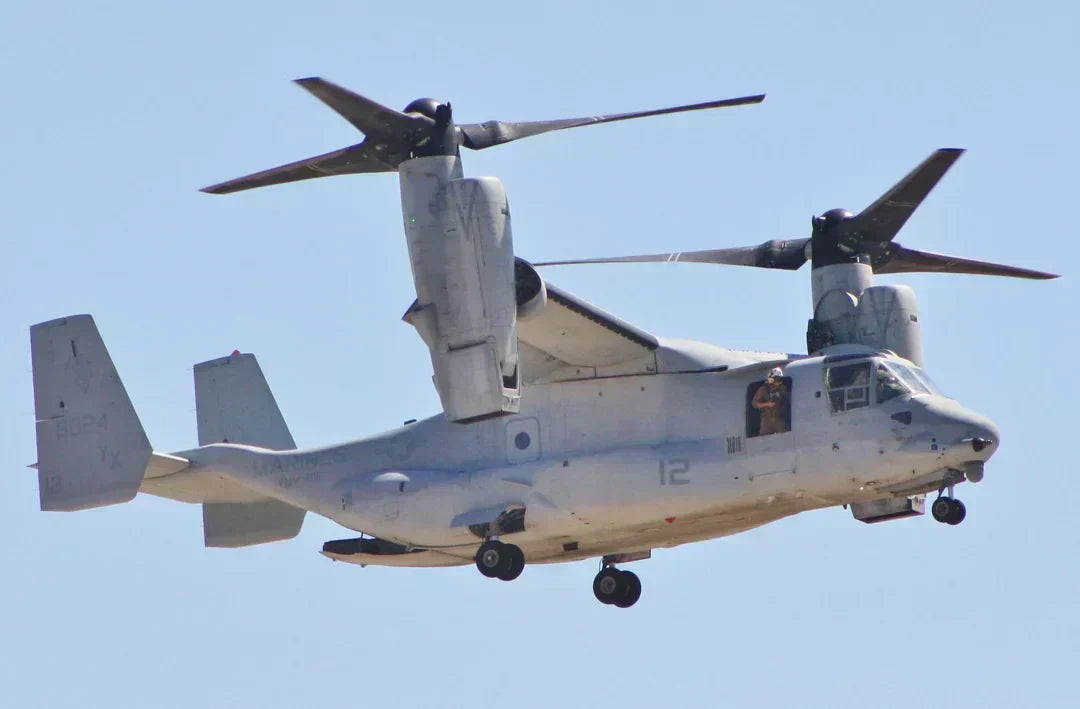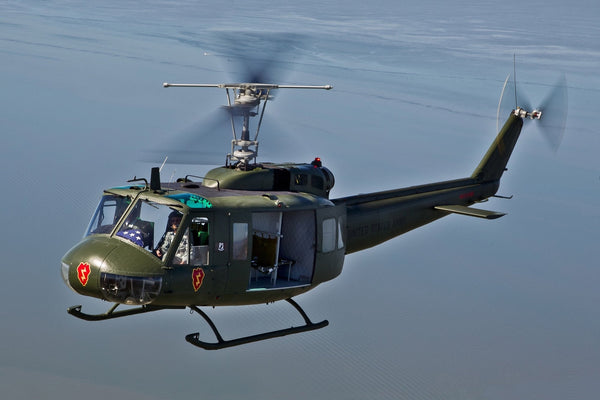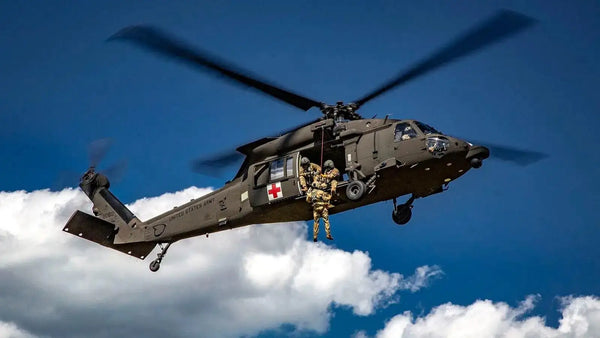In the world of military aviation, few aircraft have sparked as much debate and fascination as the V-22 Osprey. A revolutionary tiltrotor aircraft, the Osprey stands alone in its ability to marry the capabilities of two distinct platforms: the vertical takeoff and landing of a helicopter with the speed and range of a fixed-wing airplane. This dual capability has made it a transformative force in modern military operations, but its journey from a bold concept to a combat-proven asset was anything but smooth.
Origins and Early Concepts
The genesis of the V-22 can be traced back to the aftermath of a military failure. The failed 1980 Iran hostage rescue mission, Operation Eagle Claw, exposed a critical gap in the U.S. military’s capabilities. Planners realized the need for an aircraft that could take off and land in confined spaces but also fly at high speeds over long distances to avoid detection and deliver forces quickly.

Iran hostage rescue mission (1980)

Operation Eagle Claw (1980)
This need gave rise to the tiltrotor concept, a vision that had been explored for decades but never fully realized. The idea was simple yet complex: an aircraft with two large proprotors on wingtips that could pivot, or "tilt," from a vertical position for helicopter-like flight to a horizontal position for airplane-like flight. The joint efforts of Bell Helicopter and Boeing Vertol, now part of Boeing, laid the groundwork for what would become the V-22 Osprey program.
Development Challenges
The path to building the V-22 was fraught with significant technical and political hurdles. Combining the complex flight dynamics of a helicopter with the aerodynamic requirements of a plane presented a series of formidable engineering challenges. The program was plagued by cost overruns and delays, stretching through the 1980s and 1990s.
More critically, early test accidents resulted in a series of tragic crashes that cast a long shadow over the program. These incidents fueled intense controversy and a fierce political debate. Critics labeled the Osprey a "widow maker" and a wasteful boondoggle, arguing for its cancellation. However, strong support from military leaders and a dedicated group of politicians, who saw the Osprey's potential, kept the program alive.
Design and Technical Features
At the heart of the V-22's design is its unique tiltrotor mechanism. The aircraft is powered by two Rolls-Royce Liberty AE1107C turboshaft engines, each driving a three-bladed proprotor. For takeoff and landing, the proprotors face upward, allowing the Osprey to operate from small clearings, ship decks, or unprepared fields. Once airborne, they can be tilted forward, converting the aircraft to a turboprop plane capable of speeds over 300 mph—nearly twice that of traditional helicopters.

Rolls-Royce AE 1107C Liberty engine at AUSA (2019)
This technological marvel gives the Osprey a significant advantage in speed, range, and payload. It can carry up to 24 troops or over 20,000 pounds of internal cargo. Its versatility is unparalleled, serving a multitude of roles, including troop transport, combat assault, cargo delivery, medical evacuation, and special operations support. Over time, continuous improvements have been made to its avionics, flight control systems, and survivability features, enhancing both its safety and effectiveness.
Entry into Service
The V-22's first flight took place in 1989, but it would be years before it entered full operational service. Low-rate production began in 1997, and the U.S. Marine Corps officially declared its first Osprey squadron operational in 2007. The Osprey is now in service with multiple branches of the U.S. military, each with a specialized variant:
- MV-22B: The primary variant used by the U.S. Marine Corps for assault support and transport.
- CV-22B: An Air Force Special Operations Command variant, optimized for long-range, clandestine missions.
- CMV-22B: The newest variant, used by the U.S. Navy for Carrier Onboard Delivery (COD) missions, replacing the C-2 Greyhound.
Combat and Operational History
The true test of the V-22 came with its first deployments to combat zones in Iraq and Afghanistan. It quickly proved its worth, performing a variety of missions that would have been impossible for a traditional helicopter fleet. The Osprey's speed and range allowed it to bypass enemy threats, transport troops and supplies across vast distances, and provide crucial support to special operations forces.
Beyond combat, the V-22 has been instrumental in humanitarian and disaster relief missions, demonstrating its ability to rapidly deliver aid and evacuate people from remote or devastated areas. The lessons learned from these operations have refined military tactics, solidifying the Osprey's place as a vital asset. Its success has also generated interest from international allies, with Japan becoming the first foreign operator of the V-22.
Comparisons with Traditional Helicopters
To truly appreciate the V-22, it's essential to compare it to the aircraft it has succeeded and supplemented. The Osprey was designed to replace the aging CH-46 Sea Knight helicopter, and in doing so, it has dramatically increased the speed, range, and survivability of Marine assault forces.
When compared to workhorses like the CH-47 Chinook or UH-60 Black Hawk, the V-22 stands out for its high-speed cruise capability. While the Chinook can lift heavier loads and the Black Hawk is more agile in tight spaces, neither can match the Osprey's ability to cover hundreds of miles in a fraction of the time. This makes the Osprey a force multiplier, enabling new strategies for rapid response and long-range logistics.
Legacy and Future Prospects
The V-22 Osprey’s legacy is a testament to the power of persistence and innovation. It has not only reshaped military aviation but has also paved the way for the next generation of tiltrotor technology. Concepts like the Bell V-280 Valor, a next-generation tiltrotor being developed for the U.S. Army's Future Long-Range Assault Aircraft (FLRAA) program, directly build upon the lessons and triumphs of the Osprey.
Today, the V-22 remains a cornerstone of U.S. and allied forces, a symbol of a futuristic concept that battled through immense challenges to become a proven, indispensable aircraft.
Final Thoughts
The V-22 Osprey’s journey from a nascent concept born out of a military need to a battle-tested aircraft is a remarkable story of technological ambition and resilience. It is a machine that defied its critics, overcame its early failures, and emerged as a revolutionary platform that has fundamentally changed the way modern military forces operate. The Osprey's impact on aviation design and its enduring role in global security ensure its place in history as a symbol of bold innovation in the sky.
Bring the Osprey’s Legacy to Life
You can capture that spirit in your own space with a handcrafted wooden V-22 Osprey model. Each piece is meticulously carved and polished by skilled artisans, making it not just a collectible, but a work of art. Perfect for aviation enthusiasts, veterans, or anyone who values history and craftsmanship, this model brings the story of the Osprey to life on your desk or display shelf. Pay a visit to our shop for more information at Premium Wood Art and own a timeless tribute to one of the most revolutionary aircraft in modern aviation history.
✈️ Bring Aviation History Home


